Jeep Avenger vs Kia Stonic – Which one offers the better deal?
Everyday use, family trips or long-distance drives – here’s where the differences show.
Discover whether Jeep Avenger or Kia Stonic fits your lifestyle better.
Costs and Efficiency:
Looking at overall running costs, both models reveal some interesting differences in everyday economy.
Kia Stonic has a barely noticeable advantage in terms of price – it starts at 20100 £, while the Jeep Avenger costs 21900 £. That’s a price difference of around 1808 £.
Fuel consumption also shows a difference: Jeep Avenger manages with 4.90 L and is therefore to a small extent more efficient than the Kia Stonic with 5.60 L. The difference is about 0.70 L per 100 km.
Engine and Performance:
Power, torque and acceleration are the classic benchmarks for car enthusiasts – and here, some clear differences start to show.
When it comes to engine power, the Jeep Avenger has a distinct edge – offering 156 HP compared to 115 HP. That’s roughly 41 HP more horsepower.
In acceleration from 0 to 100 km/h, the Jeep Avenger is to a small extent quicker – completing the sprint in 9 s, while the Kia Stonic takes 10.70 s. That’s about 1.70 s faster.
In terms of top speed, the Jeep Avenger performs slight better – reaching 194 km/h, while the Kia Stonic tops out at 182 km/h. The difference is around 12 km/h.
There’s also a difference in torque: Jeep Avenger pulls clearly perceptible stronger with 260 Nm compared to 200 Nm. That’s about 60 Nm difference.
Space and Everyday Use:
Beyond pure performance, interior space and usability matter most in daily life. This is where you see which car is more practical and versatile.
Both vehicles offer seating for 5 people.
In curb weight, Jeep Avenger is hardly perceptible lighter – 1180 kg compared to 1205 kg. The difference is around 25 kg.
In terms of boot space, the Jeep Avenger offers slight more room – 380 L compared to 352 L. That’s a difference of about 28 L.
In maximum load capacity, the Jeep Avenger performs barely noticeable better – up to 1277 L, which is about 122 L more than the Kia Stonic.
When it comes to payload, Jeep Avenger to a small extent takes the win – 502 kg compared to 445 kg. That’s a difference of about 57 kg.
Who wins the race?
The Jeep Avenger proves to be leaves the rival little chance and therefore becomes our DriveDuel Champion!
Jeep Avenger is the better all-rounder in this comparison.
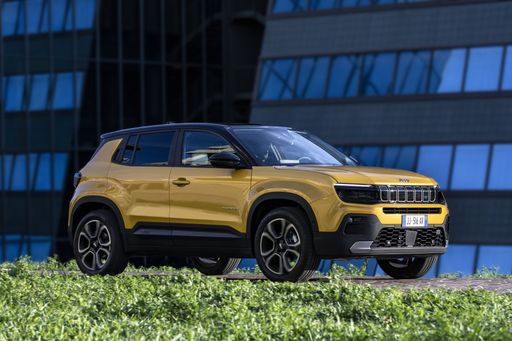 @ Jeep / Stellantis Media
@ Jeep / Stellantis Media
Jeep Avenger
Jeep Avenger
The Jeep Avenger shrinks Jeep's boxy, adventurous styling into a city-friendly electric crossover that looks just as at home on tight streets as it does on muddy weekend lanes. It's a savvy pick for drivers who want go-anywhere attitude without the truck-size ego — practical inside, lively around town and ready to tackle a bit of rough stuff when the mood strikes.
details @ Jeep / Stellantis Media
@ Jeep / Stellantis Media
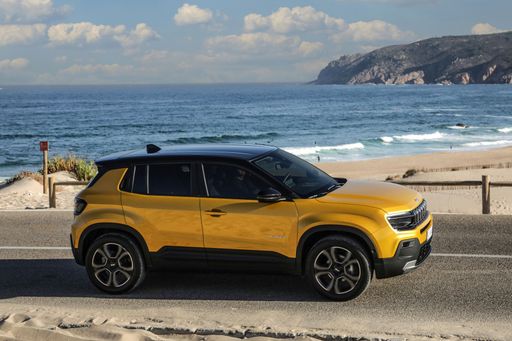 @ Jeep / Stellantis Media
@ Jeep / Stellantis Media
 @ Jeep / Stellantis Media
@ Jeep / Stellantis Media
 @ Jeep / Stellantis Media
@ Jeep / Stellantis Media
 @ Jeep / Stellantis Media
@ Jeep / Stellantis Media
Kia Stonic
The Kia Stonic is a sprightly compact crossover that mixes city-friendly agility with a cheeky, modern design — perfect for buyers who want style without sacrificing sense. Inside it serves up clever practicality and a bright, well-equipped cabin, making everyday driving feel a bit more fun than it has any right to be.
details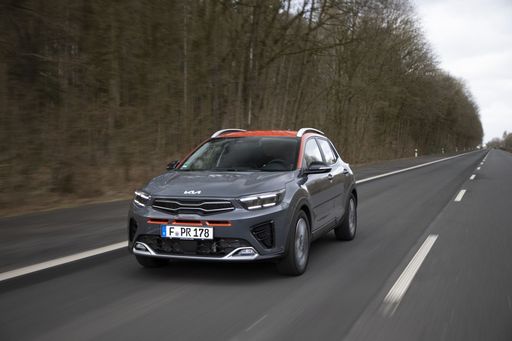 @ Kia Corporation
@ Kia Corporation
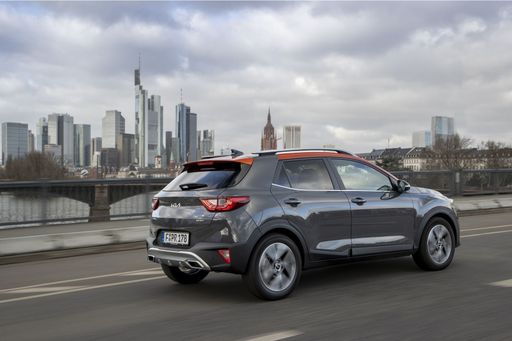 @ Kia Corporation
@ Kia Corporation
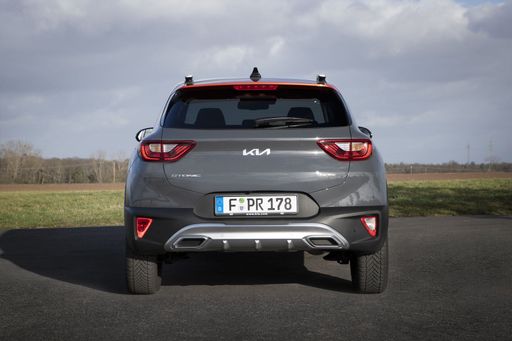 @ Kia Corporation
@ Kia Corporation
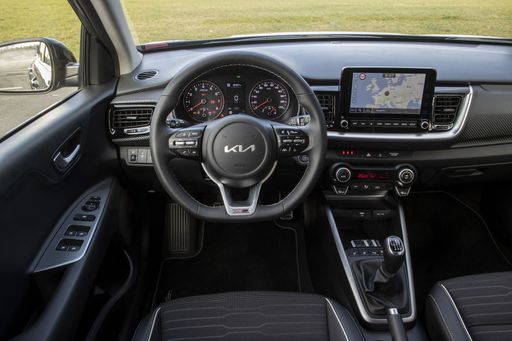 @ Kia Corporation
@ Kia Corporation
 @ Kia Corporation
@ Kia Corporation
 @ Jeep / Stellantis Media
@ Jeep / Stellantis Media
|
 @ Kia Corporation
@ Kia Corporation
|
|
|
|
Costs and Consumption |
|
|---|---|
|
Price
21900 - 36900 £
|
Price
20100 - 26600 £
|
|
Consumption L/100km
4.9 - 5.7 L
|
Consumption L/100km
5.6 - 5.9 L
|
|
Consumption kWh/100km
15.50 kWh
|
Consumption kWh/100km
-
|
|
Electric Range
400 km
|
Electric Range
-
|
|
Battery Capacity
51 kWh
|
Battery Capacity
-
|
|
co2
0 - 129 g/km
|
co2
127 - 133 g/km
|
|
Fuel tank capacity
44 L
|
Fuel tank capacity
45 L
|
Dimensions and Body |
|
|---|---|
|
Body Type
SUV
|
Body Type
SUV
|
|
Seats
5
|
Seats
5
|
|
Doors
5
|
Doors
5
|
|
Curb weight
1180 - 1520 kg
|
Curb weight
1205 - 1270 kg
|
|
Trunk capacity
325 - 380 L
|
Trunk capacity
352 L
|
|
Length
4084 - 4088 mm
|
Length
4165 mm
|
|
Width
1776 mm
|
Width
1760 mm
|
|
Height
1527 - 1541 mm
|
Height
1520 mm
|
|
Max trunk capacity
1218 - 1277 L
|
Max trunk capacity
1155 L
|
|
Payload
494 - 502 kg
|
Payload
440 - 445 kg
|
Engine and Performance |
|
|---|---|
|
Engine Type
Electric, Petrol, Petrol MHEV
|
Engine Type
Petrol, Petrol MHEV
|
|
Transmission
Automatic, Manuel
|
Transmission
Manuel, Automatic
|
|
Transmission Detail
Reduction Gearbox, Manual Gearbox, Dual-Clutch Automatic
|
Transmission Detail
Manual Gearbox, Dual-Clutch Automatic
|
|
Drive Type
Front-Wheel Drive, All-Wheel Drive
|
Drive Type
Front-Wheel Drive
|
|
Power HP
100 - 156 HP
|
Power HP
100 - 115 HP
|
|
Acceleration 0-100km/h
9 - 10.6 s
|
Acceleration 0-100km/h
10.7 - 12.1 s
|
|
Max Speed
150 - 194 km/h
|
Max Speed
179 - 182 km/h
|
|
Torque
205 - 260 Nm
|
Torque
172 - 200 Nm
|
|
Number of Cylinders
3
|
Number of Cylinders
3
|
|
Power kW
74 - 115 kW
|
Power kW
74 - 85 kW
|
|
Engine capacity
1199 cm3
|
Engine capacity
998 cm3
|
General |
|
|---|---|
|
Model Year
2023 - 2025
|
Model Year
2025
|
|
CO2 Efficiency Class
A, D, C
|
CO2 Efficiency Class
D
|
|
Brand
Jeep
|
Brand
Kia
|
What drivetrain options does the Jeep Avenger have?
Available configurations include Front-Wheel Drive or All-Wheel Drive.
The prices and data displayed are estimates based on German list prices and may vary by country. This information is not legally binding.
